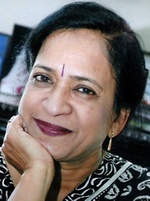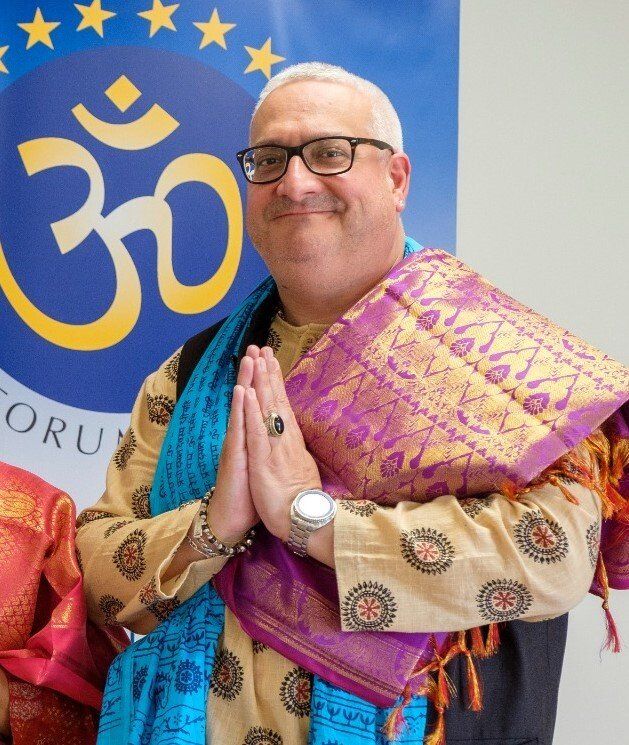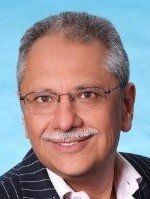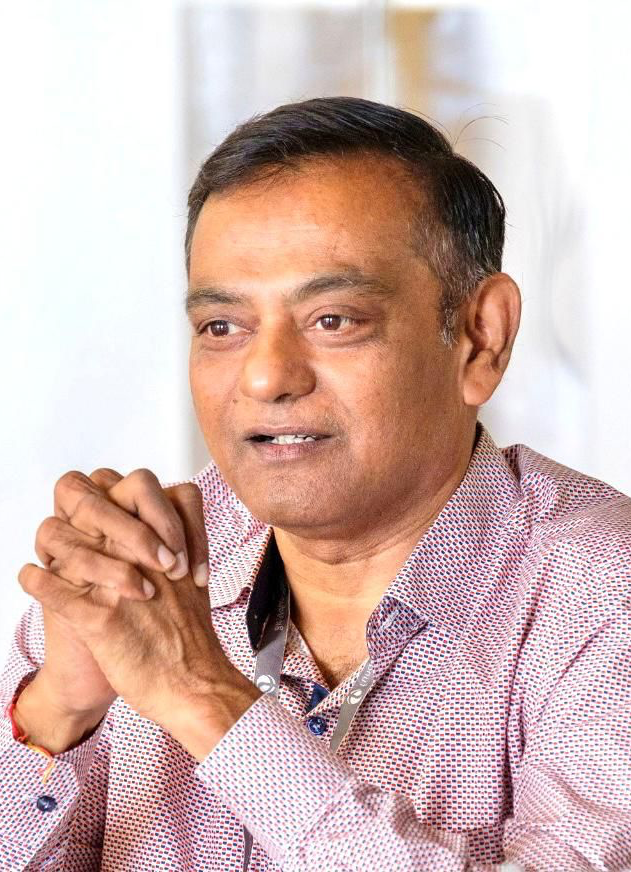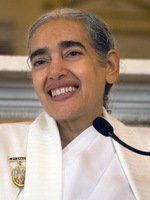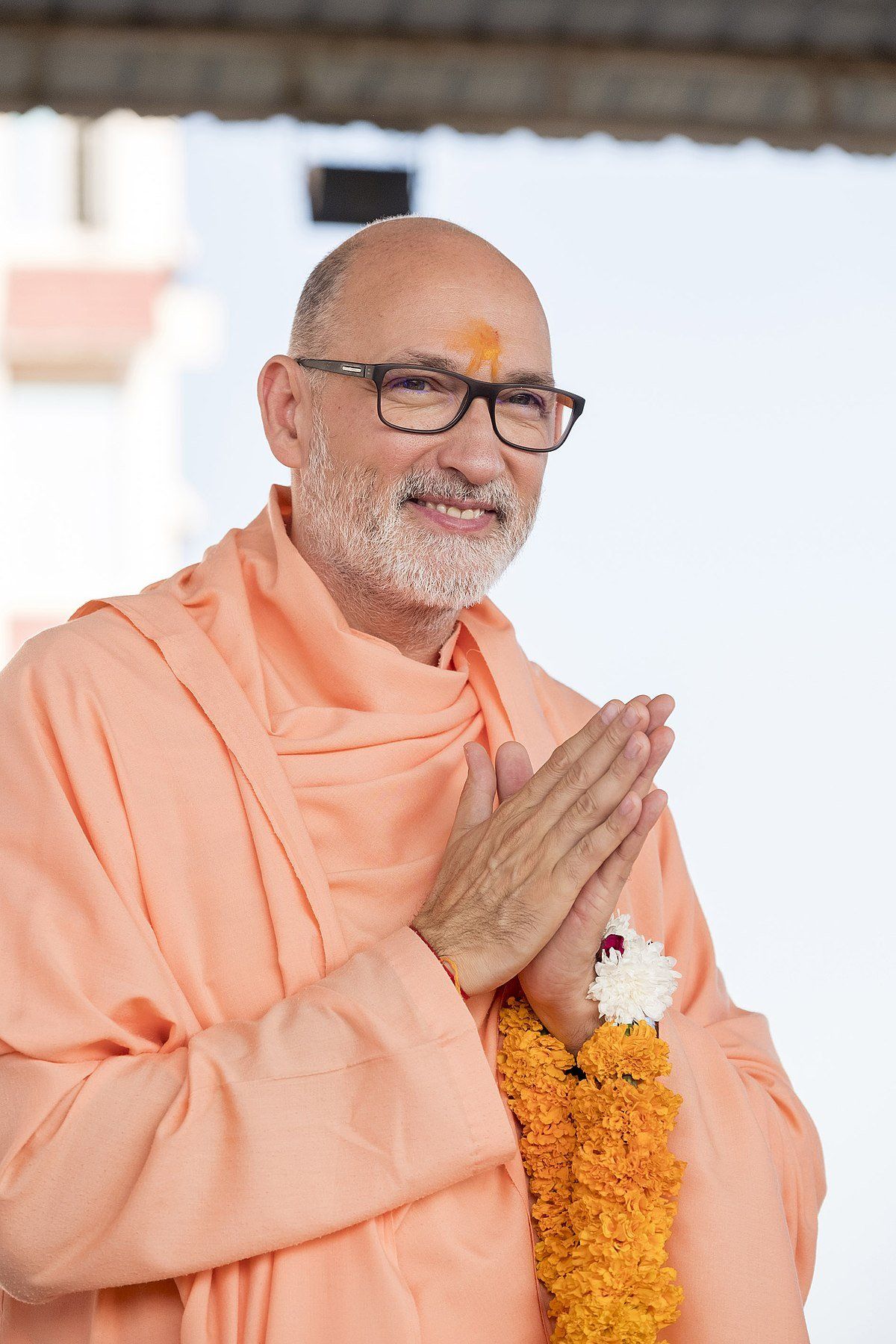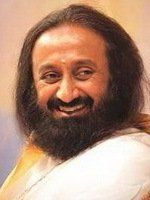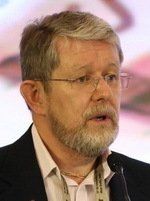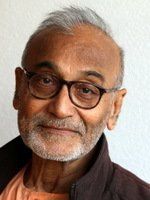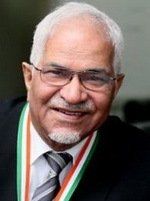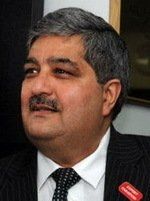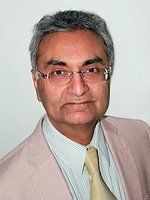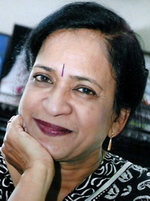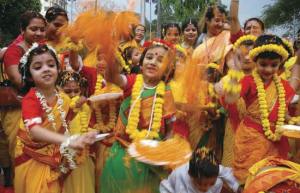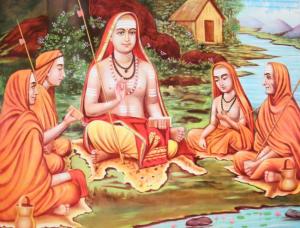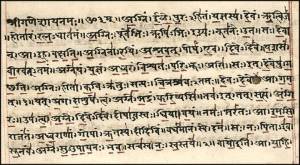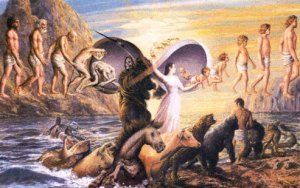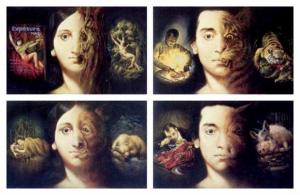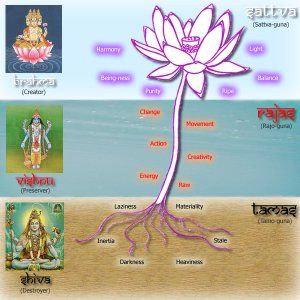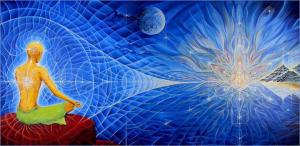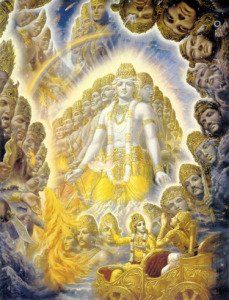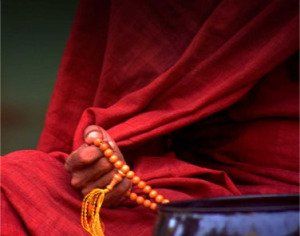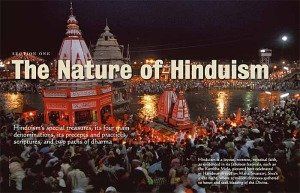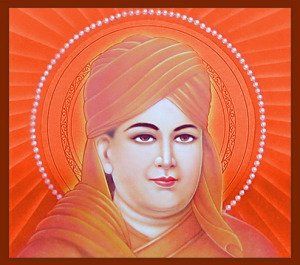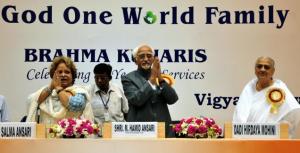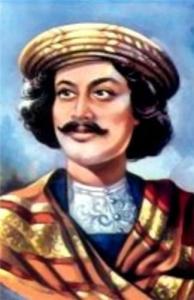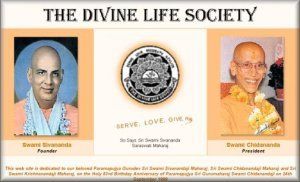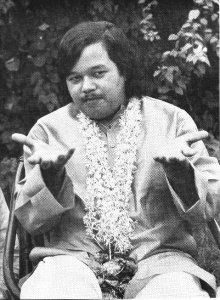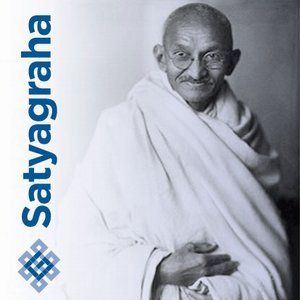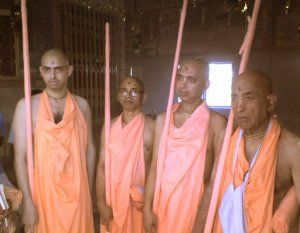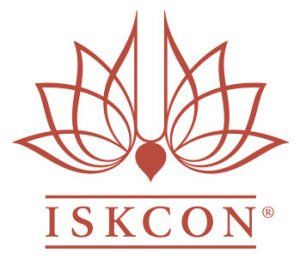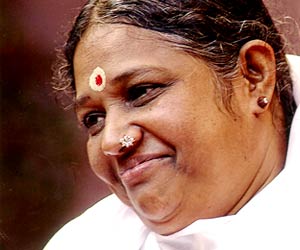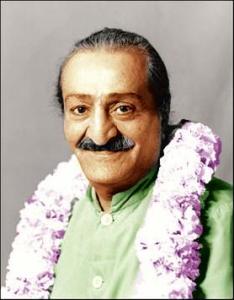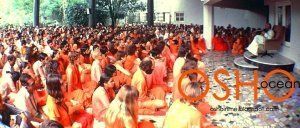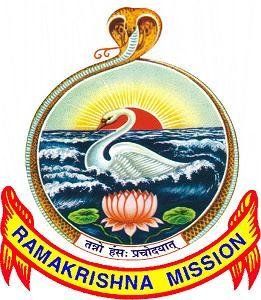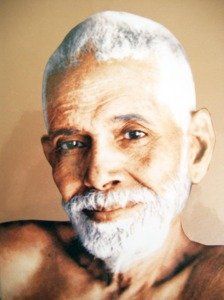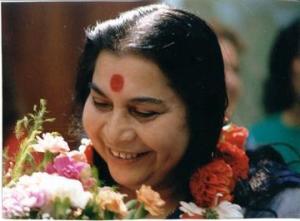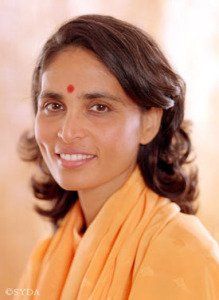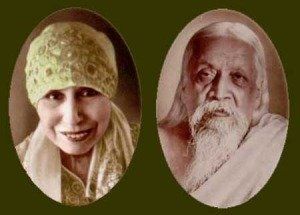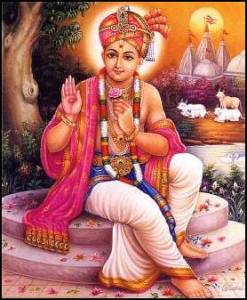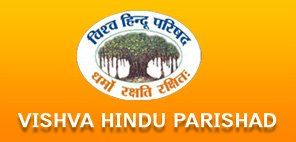About Us
About Us
The Hindu Forum of Europe was founded in 2006 in collaboration with an array of Hindu organisations across Europe. The Forum works to cohesively share and promote the European values of interfaith, friendship and peaceful coexistence. The Forum supports European governments and their citizens in building communities that are cohesive and integrated.
Declaration
We Pledge to join hands and work together as the Hindu Forum of Europe to:
- Promote our shared values of European citizenship, interfaith friendship and peaceful coexistence.
- Provide support to the European governments and citizens in building communities that are cohesive and integrated.
- Preserve European values of human dignity by drawing on the Hindu ethos that is rooted in respect for all traditions, cultures, religions and belief.
- Confederazione Italiana per Concienza de Krishna
- Federacion Hindu de Espana
- Hindu Council of Holland
- Hindu Forum of Belgium
- Hindu Forum of Britain
- Hindu Forum of Sweden
- ISKCON Hungary (HSKCON)
- Unione Induista Italiana
- NCHT – National Council of Hindu Temples – UK
- Portuguese Yoga Confederation
- Hindu Forum Luxembourg
- Swiss Federation of Hinduism
- Hindu Forum of Germany
Board of Directors
Currently serving as President and Chair, Education Hindu Forum of Britain, SACRE member, Royal Borough of Greenwich, Member, Religious Education Council, UK, Executive Director UK Women Network, Quality Assurance with Education Training & Recruitment Institute, UK. Former Principal of Elphinstone College, Mumbai, and has authored three books on Environmental Science and has published more than thirty research papers on International journals of repute. Follower of Iyengar Yoga and writes on yoga matters. Works to unite the Hindus and represents them in UK and European Parliament.
Krishna Kripa Dasa (aka Juan Carlos Ramchandani) Born in 1970 in Ceuta (Spain) from a hindu father and a christian mother.
He is a purohit (ordained hindu priest) writer and lecturer about Sanatana Dharma in different universities and colleges in Spain and other european countries.
He is also the current president of the Hindu Federation of Spain as well as a member of several international interreligious organizations like KAICIID, Transcendence and APECER.
He is fluent in spanish, english and hindi. www.jcramchandani.es
Kesh Morjaria, Executive Coordinator
Kesh Morjaria, a dedicated resident of London, UK, passionately volunteers at the renowned BAPS Swaminarayan Temple in Neasden. Beyond his devout involvement at the temple, Kesh plays an instrumental role in a myriad of religious, philanthropic, and community events. Notably, he has contributed to the InterFaith Week at the UK Parliament, the vibrant Diwali celebrations in Trafalgar Square, and the festive Diwali events in Brussels. His commitment to fostering community spirit and intercultural understanding is evident in his diverse engagements.
Arun Jogani Co-Opted Board Member
Renown Diamond Merchant, Antwerpen, Belgium. Associated with Jain Temple Antwerpen.
Social worker & founder trustee of Shraman Aarogyam India.
Advisers, Patrons and Trustees
Advisors
Patrons
Trustees
HFE Members
- Confederazione Italiana per Concienza de Krishna
- Federacion Hindu de Espana
- Hindu Council of Holland
- Hindu Matters in Britain
- Hindu Forum of Belgium
- Hindu Forum of Britain
- Hindu Forum of Sweden
- ISKCON Hungary (HSKCON)
- Unione Induista Italiana
- NCHT – National Council of Hindu Temples – UK
- Portuguese Yoga Confederation
- Hindu Forum Luxembourg
- Swiss Federation of Hinduism
- Hindu Forum of Germany
Links
- Hindu Forum of Britain
- Hindu Forum of Belgium
- Europe India Chamber of Commerce
- Hindu Council UK
- Atmananda Mission-Fundación Phi
- BAPS Shri Swaminarayan Mandir
- Hindu matters in Britain
- Bhaktivedanta College Radhadesh
- Brussels Puja Committee
- Mahavidya – Great Wisdom
- Vedic Cultural Center Govinda
- Bhaktivedanta Manor
- Indian Embassy in Belgium
- Incredible India
What is Hindu Dharma?
Hindu Dharma
Introduction
Hindu Dharma is the oldest of all religions and yet endures today as a healthy, colorful and exuberant tradition.
Other religions have all been founded by individuals, but Hinduism is not based on the teachings of any one single person. Before any prophet was born, the Sanatana Dharma was there.
— Swami Rama Thirtha (1873-1906)
It has intimate links with India and Nepal, but its influence visibly extends throughout South East Asia to countries like Sri Lanka, Mauritius, Bangladesh, Pakistan, Indonesia, Singapore, Bhutan, Indonesia-Bali etc. It has in recent times reached all corners of the world through immigration as well as through adoption by millions of persons of different nationalities, religions and cultures of one or many aspects of Hindu culture. Hinduism is conspicuous through its art, food, dress, music and philosophy. It is classified as one of the main world religions with over 1.2 Billion follwer. It has also been the source of other Eastern traditions such as Buddhism, Jainism and Sikhism.
Hindu Dharma was organized for peaceful and harmonious coexistence, not for continued confrontation with external enemies in the shape of unbelievers. It is no accident of history that, though Hindu Dharma knew internal feuds like any social polity, it never crossed its borders to wage wars against people simply because they worshiped different Gods.
— Ram Swarup (1920-1998), foremost spokesperson of Hindu spirituality and culture in India
The Word “Hindu”
Scholars suggest that the term “Hindu” was first used around the 8th century CE, by Persian invaders to refer to the people on the far side of the River Indus. These early connotations weren’t specifically religious but more cultural, political and geographical. Only later, when outsiders (first Muslims and later Christians) tried to impose their own doctrines, did the “Hindus” and outsiders try to define the religious traditions of India as a separate autonomous whole, a religion similar to other world faiths. Many scholars prefer to call Hinduism “a family of religions” with each member unique but bearing distinctive family features; or an “umbrella-term” covering different philosophical schools of thought and systems of belief. Unlike most world religions it has no single founder, no one scripture, no common creed and no universally-accepted code of conduct. The common denominator to all the traditions within Hinduism is the acceptance of the Vedas as revealed scriptures.
Indeed according to the Supreme Court of India Hinduism was legally defined in 1966 primarily as “Acceptance of the Vedas with reverence as the highest authority in religious and philosophical matters”. (Buddhism and Jainism though born in India are not included within the numerous varieties of Hindu doctrines and practices chiefly because both these traditions rejected the supreme authority of the Vedas) The word Hindu and Hindu Dharma, though very practical and convenient for Scholars, outsiders and even its followers, are nowhere to be found in any of the ancient Vedic scriptures written in the Sanskrit language, so perhaps a more appropriate way to refer to the different “Hindu” traditions could be “Vedic” traditions.
Vedic Scriptures
Hindu Dharma has no single scripture but many. They include the Vedas and their corollaries sometimes called collectively “the Vedic scriptures” written in the Sanskrit language.
There are two main divisions:
- Shruti (that which has been heard) is canonical, consisting of revelation and unquestionable truth, and is considered eternal. It refers mainly to the Vedas themselves.
- Smriti (that which has been remembered) is supplementary and may change over time. It is authoritative only to the extent that it conforms to the bedrock of Shruti
There are different opinions about the relative validity and importance of each. Some Hindus stress the foundational importance of Shruti, whereas others say that in making truths accessible, Smriti is more important today.
The Vedas are divided into 4:
- The Rig Veda is the most important and the oldest and it is divided into 10 books with a total of 1028 hymns in praise of various deities. It also contains the famous Gayatri mantra and the prayer called the Purusha Sukta (the story of Primal Man).
- The Yajur Veda is a priestly handbook for use in the performance of yajnas (sacrifices).
- The Sama Veda consists of chants and melodies to be sung during worship and performance of yajna.
- The Atharva Veda contains hymns, mantras and incantations, largely outside the scope of yajna.
Within each of these 4 books there are 4 types of composition or divisions:
- The Samhitas are literally “collections”, in this case of hymns and mantras.
- The Brahmanas are prose manuals of ritual and prayer for guiding priests. They tend to explain the Samhitas.
- The Aranyakas are literally “forest books” for hermits and saints. They are philosophical treatises.
- The Upanishads are the books of philosophy and are also called “Vedanta”, the end or conclusion of the Vedas.
There are also 2 important bodies of supplementary literature, related closely to the Vedas themselves:
- The Vedangas which expound the sciences required to understand and apply the Vedas:
- Kalpa: Ritual detail
- Siksha: Pronounciation
- Vyakarana: Grammar
- Nirukti: Etymology
- Chandas: Meter
- Jyotisha: Astronomy/Astrology
- The Upavedas (usually considered Smrti) which deal with 4 traditional arts and sciences:
- Ayur-veda: Medicine
- Gandharva-veda: Music and dance
- Dhanur-veda: Military
- Shilpa-veda: Architecture
- Within the category of Smriti there are 4 main subcategories:
- The Itihasas include “histories” and great epics like the Mahabharata (110.000 verses) and the Ramayana, which are the most popular texts for Hindus. The Mahabharata includes the Bhagavad Gita (700 verses) which is a philosophical Smriti text and the most widely read book by Hindus. (It comes closest to what the Bible is for Christians and the Koran for Muslims).
- The Puranas include 18 Maha (great) Puranas and many Upa (subsidiary) Puranas. The Bhagavata Purana is the most popular and very important for Vaishnavas of all denominations.
- The Dharma Sastras are “law books” which include the famous Manu-smriti and the Vishnu-smriti.
- The Sutras are books of concise truths or aphorisms and include the Shrauta sutras, Shulba-sutras, Grihya-sutras, Vedanta-sutras, etc.
Finally the writings and commentaries of the great Acharyas or Theologians are also considered Vedic scriptures.
Basic Concepts of Hindu Dharma
Atman – in order to understand the Hindu world-view it is essential to grasp this first and foundational concept. Atman refers to the non-material self, which never changes. It is distinct from both the mind and the body. This real self is beyond the temporary designations we normally ascribe to ourselves, in terms of race, gender, species and nationality. Consciousness, wherever it is found (in other words not only human beings), is considered a symptom of the soul, and without it the body has no awareness. In short the atman or individual soul is spirit (Brahman), unchanging, eternal and conscious while the body is material, temporary and unconscious. At death the soul is carried within the subtle (astral) body into another body. The next body is determined by the state of mind at death, and by the soul’s desires and deserts.
Samsara – or cycle of reincarnation refers to the process of passing from one body to another throughout all species of life. Hindus believe that consciousness is present in all life forms, even fish and plants. However, though the soul is present in all species, its potential is exhibited to different degrees. In aquatics and plants it is most “covered”, practically asleep, whereas in humans it is most alert. This progression of consciousness is manifest throughout 6 broad “classes of life”, namely 1) aquatics, 2) plants, 3) insects and reptiles, 4) birds, 5) animals and 6) humans. Most Hindus consider samsara essentially painful, a cycle of 4 recurring problems: birth, disease, old-age and death.
Karma – The universal law of karma (action and reaction) determines each soul’s unique destiny. The self-determination and accountability of the individual soul rests on its capacity for free choice. This is exercised only in the human form. Whilst in lower species, the atman takes no moral decisions but is instead bound by instinct. Therefore, although all species of life are subject to the reactions of past activities, such karma is generated only while in the human form. Human life alone is a life of responsibility. The Bhagavd Gita categorizes karma, listing 3 kinds of human actions: 1) Karma; those which elevate, 2) Vikarma: those which degrade and 3) Akarma: those which create neither good nor bad reactions and thus lead to liberation.
Prakriti – or matter is inert, temporary and unconscious. Everything made of matter undergoes 3 stages of existence- 1) it is created, 2) it remains for some time and, 3) it is inevitably destroyed.
Gunas – Matter is composed of 3 qualities (gunas) corresponding to creation, sustenance and destruction:
- Sattva or goodness is pure, elevating, enlightening.
- Rajas or passion motivates us to create, acquire and enjoy.
- Tamas or ignorance is dirty, degrading, deluding and destructive.
All material phenomena can be analyzed in terms of the gunas. According to the soul’s preference for a particular mode, it takes on a corresponding body. Those influenced by goodness will be elevated to the heavenly planets at death, those largely in influenced by passion stay in the human society and those influenced by ignorance enter into the lower species.
Maya – or illusion means that which is not. Influenced by the 3 gunas the atman or soul mistakenly identifies with the body. He accepts such thoughts such as “I am white and I am a man”, or “This is my house, my country and my religion.” Thus the bewildered soul identifies with the temporary body and everything connected to it, such as race, gender, family, nation, bank balance and sectarian religion. Under this false identity the atman aspires to control and enjoy matter. It is by cultivating the quality of goodness that the soul can make gradual progress towards transcendence and eventually fully escape the influence of any of the 3 gunas including goodness and obtain liberation.
Moksha – or liberation from Samsara, Maya and the influence of the 3 Gunas is considered by most Hindu traditions as the ultimate goal of life. The main difference of opinion centre on the precise nature of Moksha. Although practically all schools consider it a state of unity with God, the nature of such unity is contested. The Advaita or monistic traditions say that moksha entails annihilation of the soul’s false sense of individuality and realization of its complete non-difference from God. The Dvaita or dualistic traditions claim that God remains ever distinct from the individual soul or atman even after the soul has achieved liberation from its false identity; and union with God refers to a unity of purpose in which the individual soul surrenders, serves and loves the Supreme Brahman or God.
God is addressed by many names in Hinduism depending on the tradition or aspect of the Supreme Truth that one is trying to present. Many Hindus describe God as Sat-Cid-Ananda or full of eternity, knowledge and bliss.
These correspond to three main features of the Supreme:
- Brahman refers to the all-pervading aspect of God. Scripture states ‘everything is Brahman.” This sat/eternal aspect of God is realized by understanding one’s own eternal nature as atman.
- Paramatman or Antaryami means “the controller within” and refers to God residing within the hearts of all beings. He is often referred to as the Supersoul and is initially perceived in various ways, through memory, instinct, intelligence, inspiration, and exceptional ability. He is the object of meditation for many mystic yogis. This feature of God represents his cit or knowledge aspect.
- Bhagavan means “one endowed with unlimited opulence” and refers to God who lives beyond this material world. Bhagavan is the Supreme person and the individual soul can enter into a direct relationship with Him, thus experiencing ananda or spiritual pleasure.
Most traditions accommodate these three aspects of God, but will understand the relationship between them differently. They often stress one feature as more important than the others. They also differ as to the exact identity of God and their understanding of the many gods and goddesses.
Main Traditions and Paths
Classifying the many groups within Hinduism is a challenge more so than with other religions. In so doing, we may unconsciously promote the idea that Hinduism is a single monolithic religion. As mentioned before it is more accurately a “family of religions” with each family member autonomous but sharing distinctive family features. The fact that some Hindu traditions are monotheistic others monistic and yet others polytheistic is a proof that Hinduism is quite different from other world faiths. In trying to discern specific strands within Hinduism we are in danger of over-generalizing, promoting stereotypes and creating false boundaries. Nonetheless, it is useful- even necessary-to establish a somewhat tentative framework for categorizing the numerous groups and sub-groups. The main classification of Hinduism is based on the focus of worship which produces four main traditions
- Vaishnavism is the largest tradition within the family of religions called Hinduism. It is the oldest monotheistic tradition in the world. Its followers called Vaishnavas worship God under the names/forms of Vishnu (“one who is all-pervading”), Krishna (“the all- attractive one”), Rama (“the source of all-pleasure”) or other less well known names/forms or Avatars. There are four main branches or sampradayas of Vaishnavism and many sub-branches. The theologians/founders of these 4 main branches or sampradayas are: Ramanuja, Madhva, Nimbarka and Vishnuswami. The main Vedic scriptures studied and followed by the Vaishnavas are: Mahabharata, Ramayana, Bhagavad-Gita, Bhagavat Purana and Vedanta Sutras. The main places of pilgrimage for the Vaishnavas are: Mathura/Vrndavana, Ayodhya, Puri, Dvaraka, Tirupati, Gurvayor, Shri Rangan, etc.
- Shaivism is the second largest tradition and has several and important branches. It is commonly associated with asceticism. Lord Shiva himself is often depicted as a yogi sitting in meditation in the Himalayas. The main Vedic scriptures studied and followed by the Shaivites are: Svetashvatara Upanishad, Shiva Purana and the Agamas. The main places of pilgrimage for the Shaivites are: Benares, Rameshvaram, Kedarnatha, Amarnatha, etc.
- Shaktism focuses on the goddess generically called “Devi”. The Shakta tradition specifically worships Shiva’s consort, in her many various forms such as Parvati, Durga, Kali, etc. The main Vedic scriptures studied and followed by the Shaktas are: Devi Purana, Kalika Purana, Devi Bhagavata Purana and the Tantras. The main places of pilgrimage are: Bengal, Calcutta (Kali Temple), Kanyakumari, Madurai, Vaishno Devi, etc.
There is a fourth mainstream Hindu tradition called Smarta. The followers of this tradition are called the Smartas and are traditional and very strict about rules and regulations and emphasize the universality of Hinduism by distancing themselves from the exclusive worshippers of Vishnu, Shiva or Devi. The Smarta Tradition is a relatively new development in Hinduism and many Hindus may not strictly identify themselves as Smartas but, by adhering to Advaita Vedanta ( the doctrine of Monism or Oneness with the Supreme) as a foundation for non-sectarianism, are indirect followers. The main theologian of this tradition is Shankaracharya or Adi Shankara who is reputed to have started the system of worshipping 5 deities. He was the founder of the Advaita School of Vedanta which underpins the widespread notion that all deities are equal. The main scriptures for the Smartas are: Vedanta Sutra, Upanishads and Shariraka Bhasya. And the main places of pilgrimage are: Badrinatha, Puri, Kanchipuram, etc.
Another criterion for classifying the followers of Hinduism is the spiritual processes or paths they choose. Though within Hinduism there are many diverse practices most fall within 4 main paths or margs. Since these paths are aimed at union (with God) they are also called “yogas”. They are:
- Karma Marg/Yoga or the path of (proper) action
- Jnana Marg/Yoga or the path of knowledge
- Raja (Astanga) Marg/Yoga or the path of meditation
- Bhakti Marg/Yoga or the path of devotion
The four main denominations often favor one or more of these paths for example the Vaishnavas favor the path of devotion, the Shaivites favor the paths of knowledge and meditation, the Shaktas favor the path of proper action and the Smartas favor the path of knowledge.
Conclusion
Though most Hindus belong to one of the above mentioned traditions or practice one of the above mentioned paths there are many Hindus that don’t identify with any particular tradition or path but several or all traditions and paths simultaneously. There are also many that follow one or several of the many modern Hindu movements many of which are syncretic, adopting concepts and practices from any of the above traditions or paths or even from other world religions and philosophies. Hindu Dharma tends to accommodate people with different concepts of the Supreme so that all can gradually progress towards ultimate self-and God-realization.
The term Hindu Dharma needs to be addressed by the leaders of the many different traditions within it and reassessed. There may be a more original and proper word or term for referring to the different traditions originating in India of following the Vedic scriptures.
Main Modern Hindu Movements and Spiritual Leaders
The Ananda Marga Yoga Society was founded in 1955 by Prabhat Rarjar Sarkar (1921-1990) in the state of Bihar, India. Ananda Marga, as it is commonly called, conceives of itself as “an international socio spiritual movement involved in the twin pursuit of self-realization and service to all creation”. Sarkar better known as Sri Sri Anandamurti is often referred to by his followers as “Baba” (father). Ananda Marga practices Tantra Yoga, meditation and active engagement in social service toward the goal of realizing a more humane and just world.
Arya Samaj was founded by Swami Dayananda Sarasvati in 1875 as a radical reform movement. Dayananda wanted to halt the Christian missionary onslaught and return to the Vedic tradition. He therefore sought to purge Hinduism of what he considered later additions, such as image worship, pilgrimage and ritual bathing. Although emphasizing the Vedic tradition, Dayananda also wanted to modernize Hinduism and re-absorb Hindus who had converted to Islam and Christianity. The followers of Arya Samaj agree to follow its “Ten Principles”, worship largely through havan or the sacred fire ceremony and recitation of the Gayatri mantra.
The Brahma Kumaris World Spiritual Unviversity (BKWSU) was founded in the late 1930’s by Lekhraj Khubchand Kirpalani (1877-1969) in Karachi (now Pakistan). He was a wealthy diamond merchant and devout Hindu who later took the spiritual name Pajapita Brahma. The Raja Yoga embraced by the Brahma Kumaris does not involve any mantras, special postures or breathing techniques. It is usually practiced in a sitting position with the eyes open facing a picture of red and orange rays emanating from a center of light. Meditators are encouraged to focus on a “third eye” behind the forehead, the objective being to practice “soul consciousness” recognizing the self not as body but as a soul.
The Brahmo Sabha was founded in 1828 by Rama Mohan Roy and in 1843 was restructured and renamed Brahmo Samaj by Devendranatha Tagore, father of the well known poet Rabindranatha Tagore. Rama Mohan was extremely learned and strongly influenced by Christianity. He disagreed with the doctrine of reincarnation and fought to abolish certain traditional practices, some of which had been grossly misused like: caste, polygamy, image worship, sati and child marriage. Devendranatha Tagore was greatly influenced by the western philosophy of Locke and Hume.
The Chinmayananda Mission was founded by followers of Swami Chinmayananda (1916-1993) in 1953 in India. Their teachings are based on Advaitic Vedanta.
The Divine Life Society was founded by Shivananda Sarasvati Maharaja (1887-1963) and its philosophy and ritual practice are rooted in Hinduism’s Bhakti Yoga and Raja Yoga paths.
The Divine Light Mission/Elan Vital was founded by Sri Hans Maharaj Ji (1900-1966) in the 1930’s in India. When Maharaj Ji died Prem Pal Singh Rawat , the youngest of 4 sons and only 8 years old at the time declared himself to be his father’s spiritual successor and a satguru or Perfect Master. The movement based on yoga and meditation practices has restructured considerably and considers it self a secular personal-growth movement and not a religious organization.
Gandhi’s Satyagraha was started by Mohandas Gandhi (1869-1947) who is probably the best known Indian of the 20th Century. He was primarily an educator and reformer. His ultimate aim was to re-establish Rama-rajya, the reign of Lord Rama-or, in more Western terms, the “kingdom of God on Earth.” His means to free India from British Rule was satyagraha (grasping the truth) based on ahimsa (non-violence) with an unswerving faith in God. He followed many orthodox practices and was particularly fond of the Bhagavad Gita.
The Gaudiya Math was founded by Bhaktisiddhanta Sarasvati Maharaja (1869-1936) in 1918 creating a modern institution dedicated to promote Vaishnavism. The original Gaudiya Math was now divided into several Maths with different names and spiritual leaders but with almost identical philosophy and practices.
The International Society for Krishna Consciousness (ISKCON) or the Hare Krishna Movement as it is commonly called was founded by A.C. Bhaktivedanta Swami (called Srila Prabhupada by his followers) in 1966. The Hare Krishna movement is a strand of Gaudiya (Bengali) Vaishnavism belonging to the Madhva Sampradaya one of the main Vaishnava traditions. It is based on teachings of a great Vaishnava saint Chaitanya (1486-1534), considered an incarnation of Radha and Krishna. He opposed the rigid caste system by widely popularizing the congregational chanting of the Hare Krishna mantra and by creating brahmanas from those born of lower varnas (castes). Chaitanya and his followers presented a unique Vaishnava doctrine called Acintya Bheda Abheda Tattva, which means that the Supreme Being is inconceivably and simultaneously one and different from His Creation and the Individual Soul, which was meant to bring to a closure the philosophical differences between the Advaita and Dvaita traditions.
The Mata Amritanandamayi Math is a network of centers around the world devoted to the teachings of Mataji (b. 1951) which emerged in India in the 1960’s. In the Temples devotees practice a form of Bhakti Yoga by singing Mataji’s bhajans/songs. Devotion to a wide variety of deity figures including, Jesus, Buddha, the Virgin Mary and so on is allowed and even encouraged, as Mataji believes that all religions are spiritual paths that lead to the same One God.
Meher Baba (1894-1969) was an Indian spiritual teacher who synthesized various strains of religions and spiritual wisdom.
The Osho Commune International was founded by Osho formerly known as Bhagavan Shree Rajneesh (1931-1990) who was a controversial spiritual teacher from India. His synthesis of spirituality with personal growth psychology attracted significant numbers of westerners.
The Ramakrishna Mission was founded by the Bengali saint Vivekananda Swami (1863-1902) in the name of his guru, Ramakrishna (1836-1886). Vivekananda Swami was expert in presenting Advaita Vedanta from Shankara and greatly impressed the Western World in his presentation to the World Parliament of Religions in Chicago in 1893. It is headed by a well-disciplined and organized body of sannyasis (renunciates). It is well known for its social and educational programs.
Ramana Maharshi (1879-1950) was a widely recognized Hindu mystic who attracted many followers from both East and West. He was an extraordinary personality and his ashram became renowned for giving all its inhabitants a deep sense of peace and tranquility. Ramana Maharshi is credited with establishing the relevance of the Advaita philosophy to the modern world.
"Sahaja Yoga was founded by Shri Mataji Nirmala Devi (B. 1923). It's practice is the actualization of the teaching of Saints, Prophets and Incarnations through the awakening of the Kundalini. It can be experienced en masse, for free and regardless the religion, the race, the nationality or the circumstances. The practitioner develop a deeper sens of moral value (Dharma) as well as an inner peace and pure Joy in the silence of thoughtless awareness. By the practice of regular meditation on the Kundalini, one get into the contact of his higher Self (Atma) and connect to the Paramatma and feel the cool breeze (Paramchaitanya) of this energy in his hands and coming out of his fontanel and establishes gradually a state of collective consciousness.
Sai Organization was founded by the contemporary Indian guru Bhagavan Shri Sathya Sai Baba born in 1926 in Andhra Pradesh. He claims to be the reincarnation of the miracle-working Maharastrian saint Sai Baba of Shirdi (1856-1918). The movement follows the style of Hindu Bhakti but emphasizes the individual’s commintment to Sai Baba himself as personification of divinity. Love of God is emphasized over scriptural learning or renunciation. Selfless love and charitable service are promoted rather than withdrawal from the world. The teachings are ecumenical and stress a single godhead as the essence of all religious traditions.
Siddha Yoga was founded by Swami Muktananda (1908-1982) in 1961. the movement quotes and comments on ritual and philosophical texts of the Veda, Vedanta, Saiva Agama and Tantra and have given special prominence to texts of Kashmiri Shaivism. Siddha Yoga seems to have an open or an emerging cannon of scripture that is determined by the guru’s assessment of what the devotees need.
Sri Aurobindo Ashrama was founded by Aurobindo Ghose (1871-1950) during his self-imposed exile in the French colony of Pondicherry. There he devouted his life to yoga and writing on spiritual matters. His ashram attracted many people from India and abroad. He attempted to formulate an integral yoga which synthesized Hindu Spirituality with modern ideas and an active role within the world. His disciples planned to develop Auroville as a model city fro the modern world. Their work continues today.
The Swami Narayan tradition was founded by Sahajananda Swami (1781-1830) considered by his followers as an incarnation of God. The group claims heritage from the Sri Sampradaya of Ramanuja one of the main Vaishnava traditions and its followers are mostly from Gujarat. There are now various Swami Narayana sampradayas reflecting different views on the identity of the guru and the genuine line of succession. The largest is the Swami Narayana Mission, whose current leader is Pramukh Swami.
Transcendental Meditation was founded by Maharishi Mahesh Yogi. It is a form of japa yoga, a form of meditation used in both Hindu and Sikh traditions.
The Vishva Hindu parishad or “Hindu World Council” was founded in 1964 by Swami Chinmayananda in conjunction with other religious leaders. Its organizational structure was determined in 1982 in Delhi, now home to its headquarters. The VHP aims to reawaken Hindu Consciousness and to promote co-operation between Hindus throughout the world. It propounds a kind of universal Hinduism drawing extensively on the teachings of Vivekananda.


